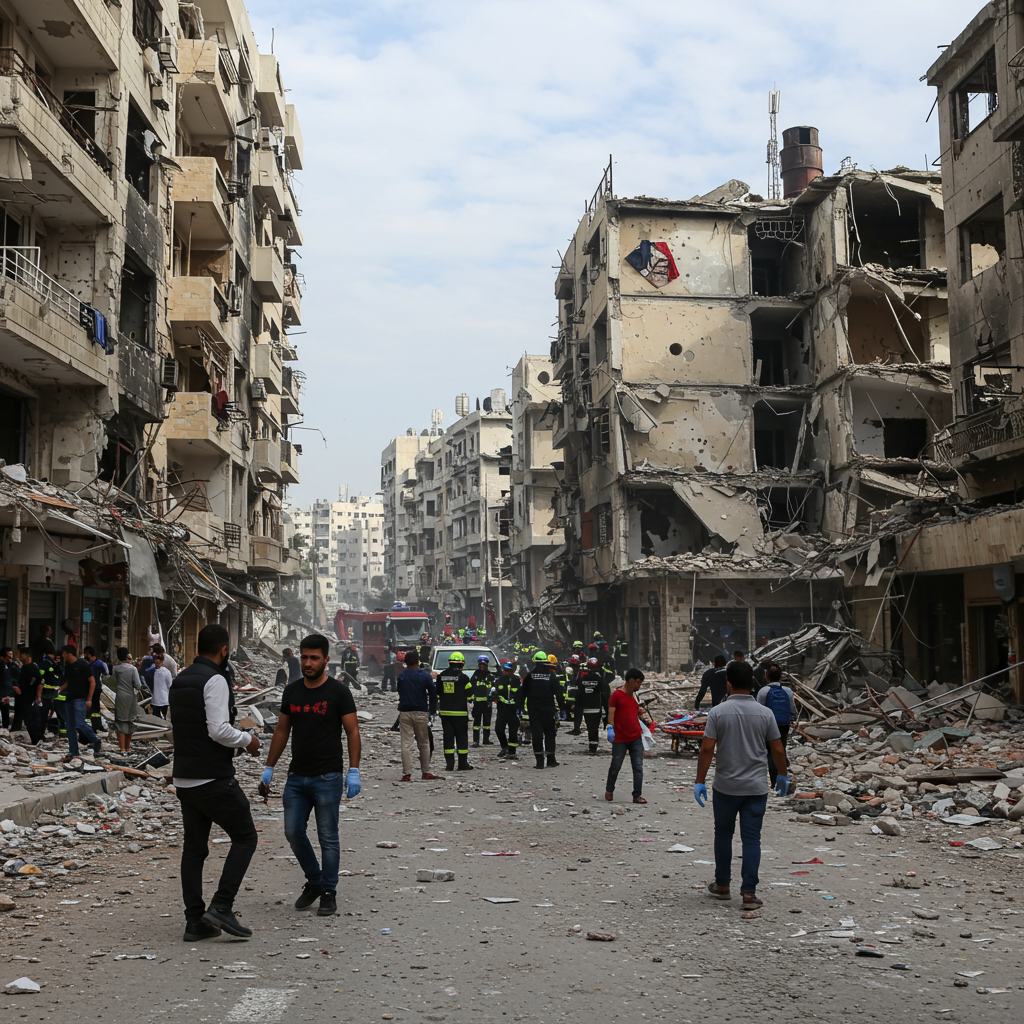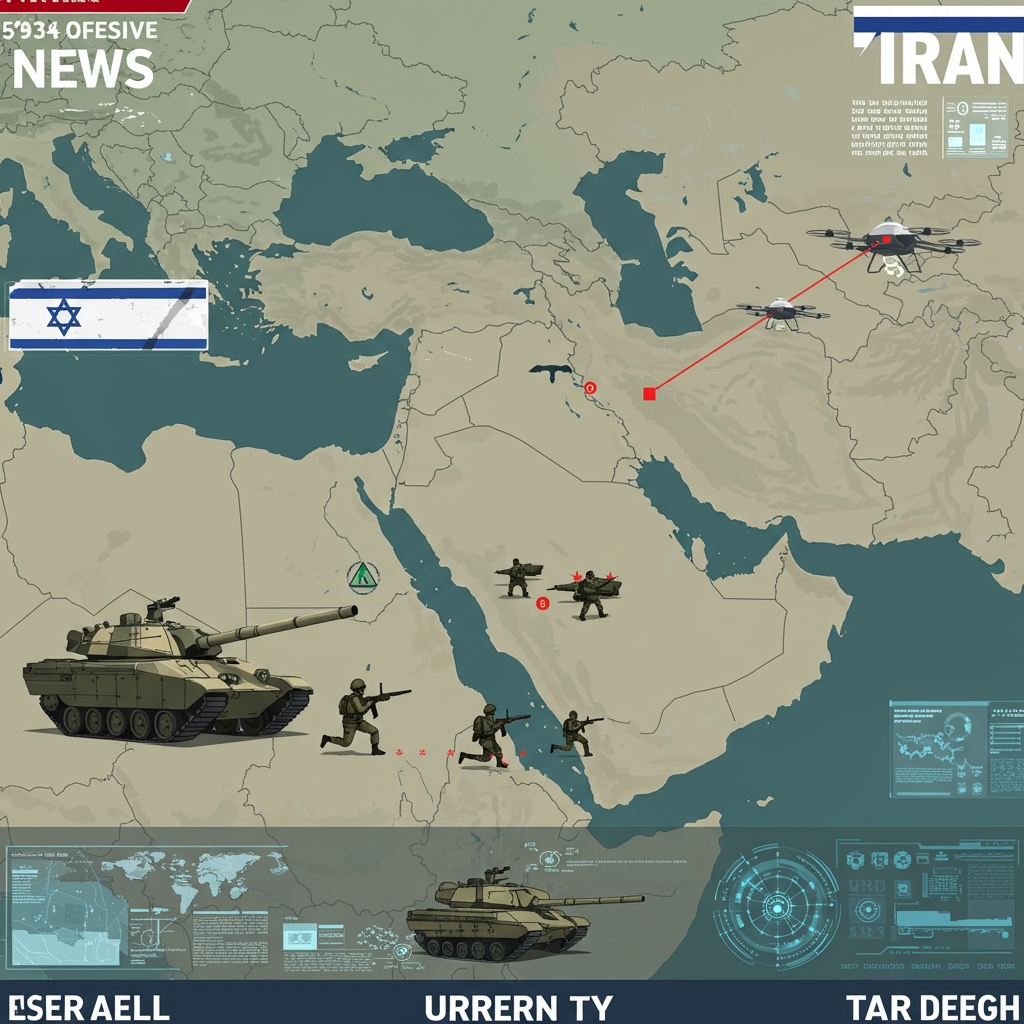Intense violence continues across Gaza, resulting in numerous palestinian fatalities. Reports indicate dozens were killed by israeli strikes and gunfire on a recent day. This surge in bloodshed coincides with renewed efforts by the United States to broker a ceasefire in the protracted conflict.
Palestinian officials stated Israeli airstrikes killed over sixty people that day. Incidents included casualties at a bustling cafe in northern Gaza. Another deadly event struck outside a food distribution point in southern Gaza. This renewed push for a truce comes as diplomatic efforts intensify.
Escalating Violence and Civilian Impact
The day marked a grim milestone, reportedly the 633rd day of the ongoing war. What remained of a school used as shelter stood as a stark reminder of shattered lives. Israel claimed it targeted a Hamas command-and-control center located next to a U.N. facility. This facility housed displaced families and children’s belongings.
A displaced Palestinian named Amani Swalha shared an emotional plea. “We are not just numbers,” she stated through an interpreter. “Every day, martyrs here, martyrs there. No, we are not like that. We are human beings.” She emphasized their right to live with dignity, not humiliation.
Recent days saw increased Israeli bombardment in Northern Gaza. Authorities urged residents to evacuate southward. This triggered another wave of displacement. Families packed onto rickety carts and competed for space on crowded roads. They were forced once more to seek safety elsewhere in the strip.
Crisis at Aid Distribution Sites
Tragically, many casualties occurred among civilians seeking essential supplies. Palestinian officials reported that dozens were shot while waiting for food in Southern Gaza. They were simply trying to feed their families. One boy was among two dozen reportedly killed during this desperate act.
Doctors Without Borders (MSF) personnel described the horrific injuries sustained. Dr. Mohammed Fadlalla, an American internal medicine specialist with MSF, works at a field hospital in Al-Zawaida. He noted a surge in patients with severe penetrating trauma to the chest and abdomen. These injuries caused life-threatening internal bleeding.
Many victims sustained permanent disabilities. Dr. Fadlalla saw patients needing wheelchairs, crutches, or walkers for life. Some lost their vision instantly. “All because they were standing in the wrong place,” he remarked grimly.
Controversy Around Aid Site Violence
These incidents happened near sites managed by the Gaza Humanitarian Foundation (GHF). The Israeli military established the GHF with U.S. financial support. Its stated goal is to deliver food to Gazans while preventing Hamas from diverting aid. However, the U.N. reports hundreds of Palestinians have been killed outside GHF sites.
An Israeli newspaper, Haaretz, reported a troubling claim. It cited unnamed Israeli army officers. They allegedly ordered soldiers to fire “deliberately” at Palestinians near GHF sites. Israeli Prime Minister Benjamin Netanyahu and Defense Minister Israel Katz vehemently denied this report. They called it malicious falsehoods.
Despite denials, the Israeli military acknowledged reviewing its actions. They announced plans to close one GHF site. Another would open nearby. This measure aims to “reduce friction with the population.” It also intends to “enable the safe and efficient passage of Gazan civilians.” The Israeli government attributes the chaos to Hamas. David Mencer, a spokesperson for the Israeli Prime Minister’s Office, accused Hamas of starving its own people. He also claimed they shoot their own people. Mencer stated Hamas systematically endangers civilians trying to get GHF aid.
Diplomatic Push for a Ceasefire
Amidst the violence, the United States is pushing for a ceasefire deal. President Trump recently posted a call to action. He urged negotiators to “Make the deal in Gaza, get the hostages back.” The White House confirmed Prime Minister Netanyahu was expected to visit Washington soon.
White House Press Secretary Karoline Leavitt commented on the situation. She described the images from both Israel and Gaza as heartbreaking. She affirmed President Trump’s desire for the war to end.
U.S. officials report divisions remain between the parties. Key points of contention include whether any agreement would be a temporary pause or a permanent end to the conflict. The U.S. is awaiting Israel’s delegation to travel to Cairo for talks. Until negotiations progress, the war’s horror continues.
Other Reported Incidents
The same day saw another devastating strike. An airstrike obliterated a Gaza City beachfront cafe. This location was known for providing rare internet access and power. It offered a brief distraction from the war’s reality. Palestinian officials reported dozens killed and wounded there. Casualties included an elderly couple. Two journalists were also reportedly among the dead: Bayan Abusultan and Ismail Abu Hatab. Colleagues carried and buried Abu Hatab. These deaths served as a somber reminder. The war spares no one. It impacts journalists, doctors, and civilians alike.
Dr. Fadlalla emphasized the shared plight of everyone in Gaza. “They’re not the doctors and they’re not the patients,” he said. “They’re all the same collection. They’re all the same population. They’re all living in the same circumstance.” This shared struggle fuels his determination to help. He works hard to improve conditions for those he sees daily. The conflict’s victims and survivors find the war inescapable.
Frequently Asked Questions
What happened at the food distribution centers in Gaza?
Multiple sources report deadly incidents near sites distributing aid in Gaza, particularly in the south. Palestinian officials and aid workers like those from Doctors Without Borders described dozens being killed or wounded while waiting for food. These sites are linked to the Gaza Humanitarian Foundation (GHF), an initiative by the Israeli military and funded by the U.S. designed to deliver aid while preventing Hamas interference. Controversy surrounds these events, with reports citing Israeli soldiers were allegedly ordered to fire deliberately near these sites, which Israeli officials deny. The Israeli military stated they are reviewing actions and adjusting operations around aid points.
What is the current status of ceasefire negotiations for Gaza?
As of the reports summarized, diplomatic efforts for a ceasefire are ongoing but face significant obstacles. The U.S., led by President Trump’s administration, has been actively pushing for a deal, including arranging potential meetings with Israeli leadership in Washington and waiting for Israeli negotiators in Cairo. Mediators like Egypt and Qatar are also involved. However, the parties remain divided, primarily over whether a ceasefire would be a temporary pause for hostage/prisoner exchanges or a permanent end to hostilities and Israeli withdrawal from Gaza. No date had been set for new comprehensive talks based on the provided information.
Why are large numbers of civilians being displaced within Gaza?
Civilians in Gaza face repeated displacement primarily due to ongoing Israeli military operations and bombardment across the strip. In the timeframe reported, Israel increased strikes in Northern Gaza and issued orders for residents there to evacuate southwards. This has forced families to leave their homes, often multiple times, seeking safer areas in already overcrowded conditions. The United Nations estimates that over 80% of Gaza is now either a militarized zone or under forced displacement orders, contributing to a severe humanitarian crisis as infrastructure is damaged and access to basic necessities is limited.
The ongoing violence in Gaza continues to inflict a heavy toll on the civilian population. Deadly strikes on areas including cafes, schools, and aid distribution points underscore the widespread danger. Despite international efforts and a push from the U.S. administration for a ceasefire, significant hurdles remain in negotiations. The humanitarian situation is dire, marked by mass displacement and a collapsing healthcare system. The path towards a resolution appears uncertain as long as key disagreements persist between the warring parties.




